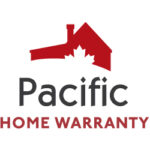The BC energy step code isn’t a mandatory part of the province’s building code, but rather an optional compliance, expanded section of building code that local governments can choose to adopt. This code can be used to either require or simply incentivize better energy efficiency in new construction projects and developments. It is named the BC step code because there are 5 “steps” or levels that a builder can achieve in accordance with the energy code. The goal for BC is to have all new construction reach net zero ready status by 2032, which means that every new building will produce more energy than it requires.
BC implemented the energy step code in 2018 to reduce the emissions produces to heat, cool, and power homes. The energy step code was put in place to combat the high emissions required to power homes since half of Victoria’s greenhouse gas emissions come from our homes. Though it doesn’t apply to renovations, all new construction projects may be subject to steps of this code to work toward BC’s climate action goals.
What Are the Five Steps of the BC Energy Step Code?
The BC energy step code has a total of 5 steps to work toward a high-efficiency or net-zero ready home. Step one simply ensures that the building meets all current energy standards of the BC building code. Step 2 requires the home to be 10% more efficient; step 3 is 20% more efficient than the base requirements. The first three levels are deemed incentives or requirements depending on your local government’s enforcement of the step code. Step 4 and 5 are incentives only and are 40% more efficient or net zero ready, respectively.
A wood-frame residential building only has 4 steps. Step 1 is the same as for a home, but step 2 applies to 20-40% more efficient homes, step 3 refers to 50% more efficient homes, and step 4 is a net zero ready home. These steps encourage high-performance systems, materials, and designs to be used to achieve varied levels of energy efficiency. Each step up earns greater incentives than the step below, particularly when it comes to the final net zero ready step since it is quite difficult to achieve and is an ambitious goal requiring a more generous budget up-front.
Depending on your building type and municipality, you’ll have to meet different requirements. In Victoria, for example, certain buildings need to meet certain steps as required by the BC energy step code:
- Step Two: Part 9 small homes and garden suites, and Part 3 high-rise or concrete residential and commercial buildings
- Step Three: Part 9 single family homes, duplexes, and townhomes, and Part 3 mid-rise or wood-frame residential buildings.
What Are the Benefits of Building to the BC Energy Step Code?
There are numerous benefits to building according to the BC energy step code. An energy efficient home is superior in several ways, including:
- Greenhouse Gas Reductions: High-efficiency homes are easier to heat than less efficient spaces, meaning that your home produces less carbon emissions even if heated by fossil fuels. Many energy-efficient homes are now heated with a heat pump to further lower carbon emissions.
- Increased Comfort: Energy efficient homes are known for being more airtight and better insulated, meaning that your home is built to withstand extreme temperatures as well as maintain even temperatures in every room, allowing you to say goodbye to cold spots in your home.
- Affordability: By building in accordance with the BC energy step code, your home will become much more affordable since you’ll pay less in energy costs year-round. Your home will maintain its heat much better than before so your furnace won’t need to work so hard to keep your home warm.
- Better Durability: High-efficiency homes are better sealed all the way around, meaning that they are much less likely to develop moisture or condensation issues. Since excess moisture is the leading cause of structural issues in homes, an energy-efficient home deteriorates at a much slower pace.
- Improved Health: Perhaps the most important benefit for those with children or pets in the home or those with allergies, a higher-efficiency home is better equipped to keep the indoor air fresh and clean, resulting in much more effective filtering of moisture, pollen, mold, and other allergens that can irritate respiratory issues, allergies, and more.
Why Choose a BC Energy Step Code Builder for Your Home?
A home builder who understands the requirements and end goals of the step code can benefit your build by a significant amount. Even if you want to build to step 2 or 3, a builder who works with the energy step code can help you prepare for future transitions to step 4 and 5. For example, your builder can install a roof that makes the installation of solar panels easier in following years, making the jump between the “easier” and “harder steps” a little more manageable.
A BC energy step code builder can also help you with planning and weighing the pros and cons of building a more energy efficient home. Despite the many benefits listed above, building to these optional steps in the energy step code comes with a significant up-front investment. Of course, the upfront cost results in greater savings down the line, so your builder is a great resource to turn to when looking at upfront vs. future costs.
Your BC energy step code builder will also understand how to make your home energy efficient better than a regular builder who doesn’t specialize or have much experience building energy efficient houses. Cohomes is dedicated to building green and energy efficient homes, and we have the expertise needed to meet each step of the code depending on your preference and budget. Working with a experienced energy-efficient builder results in a much smoother process, ensuring that your home performs exactly how it is intended to.





